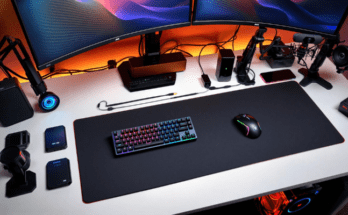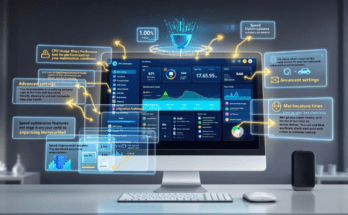Introduction
The computer domain has indeed changed the ways of operation with regards to the world, communication and functioning of tasks. The different types of gadgets use desktop computers, laptops, tablets and mobile phones and are very common these days in our society. Computers are things that we see everyday, if you want to know what computers are and how they can be used in our everyday technological lives then you must know something about the parts, uses and their capabilities. In this article, the reader will get acquainted with the characteristics of computers, their history, structure, operating systems, programs, and possible future developments.
1. Computer Evolution
Computers have had a long history of several decades as far as technology, design and capabilities of the machines are concerned. The history of the present sophisticated computer can be linked back to the foremost programmable computer known, the Z1 which was invented by Konrad Zuse in the year of 1936. However, the term “computer” evolved as a term initially with reference to someone who had the responsibility to do numerical calculations. The initial electronic digital computers first appeared in mid twentieth century, which where primarily developed for use in military and science.
The evolution of computers can be divided into five major generations
– First Generation (1940-1956): But vacuum tube based machines went hand in hand and were loaded with little memories and slow reactions.
– Second Generation (1956-1963): And they got rid of vacuum tubes and increased speed and efficiency in doing so, with transistors.
– Third Generation (1964-1971): As IC progresses, computers became smaller, faster and more powerful.
– Fourth Generation (1971-Present): The microprocessor made available and affordable what had previously been available only to large computer centers; it gave birth to the microcomputer revolution.
– Fifth Generation (Present-Future): The current efforts of scientists are aimed at creating a Smart computer, that is an ordinary computer equipped with artificial intelligence and natural language processing capabilities.
2. Computer Hardware
The tangible parts of a computer are its hardware they are the parts of a computer that perform the various processes and activities. These components include:
– Central Processing Unit (CPU): Of which the CPU [commonly called the heart of the computer], processes instructions and performs arithmetic operations.
– Memory: RAM is the computer’s memory which only contains data and instructions for a relatively short time to feed to the CPU.
– Storage: Hard drive/SSD is a long-term storage device is the computer that stores all kinds of files, programs, and data.
– Input Devices: Such are the keyboard and mouse, which enable individuals to manipulate their Computers apart from Touchscreen.
– Output Devices: There are the output devices that are used to display data, print data and pass data to speakers.
3. Computer Software
Software can be described as the complete set of instructions that exist to facilitate the operations of computer hardware. Software can be categorized into two main types:
– System Software: This can refer to the operating system (OS) and other application utilities which in one way or the other control and enable the overall operations of the computer hardware.
– Application Software: They are the programs users regularly use, for example, browsers, word processors, music and video players.
4. Operating Systems
An operating system (OS) is an application which organizes a computers’ architecture by controlling and governing computer hardware and the operation of applications. The Microsoft Windows, Mac OS X, and Linux operating system is instances of operating systems. We can say that the OS lets these several programs execute together, and also make the computer safe and stable.
5. Computer Networks
Computer networks involve linking an array of devices in order that they access and share resources and also engage in communication. These networks can be classified into the following types:
– Local Area Network (LAN): A network that encompasses one or many devices that operate within a single or many spaces, for example a building or a campus.
– Wide Area Network (WAN): A vast network that joins apparatuses across great distances and frequently relies on justifiable structures such as the internet.
– Wireless Network: Each component is connected to others in a system in which devices communicate via radio signals with the aid of radio signals.
6. Future Developments
Some developments could become a part of our everyday routine, and therefore, people will use computers even more. Some potential future developments include:
– Quantum Computing: The qubits are used to achieve a phenomenon of superposition and entanglement on these computers.
– Artificial Intelligence (AI): Computers will gain learning and decision making abilities on their own and will thus reshape industries and society.
– Virtual Reality (VR) and Augmented Reality (AR): A convergence of entertainment into experience will continue to grow, thereby causing more novelty to be experienced at the intersection where self and virtual reality meet.
Conclusion
Today’s society that we experience has been largely informed, stored and communicated with the use of computers. In this case, having information on components and functions as well as the history of the computer will help in improving on its worth and abilities. This is why as time goes on so will the technology and with it the possibilities what the computer can do as a tool and the future advances even more and also bring more possibilities and innovations that will change time and our lives even more.



